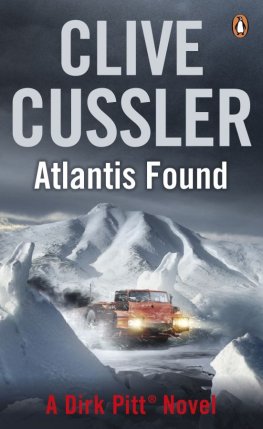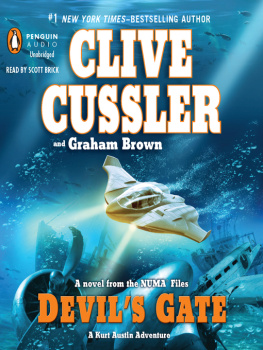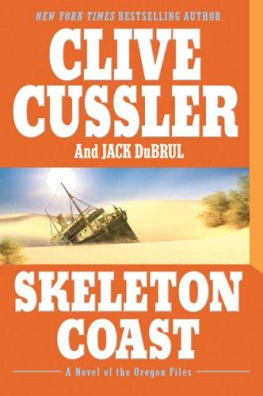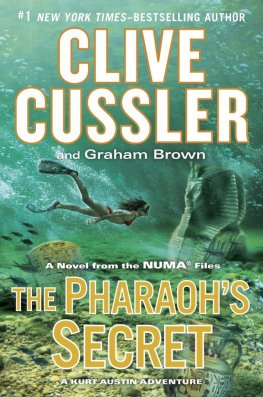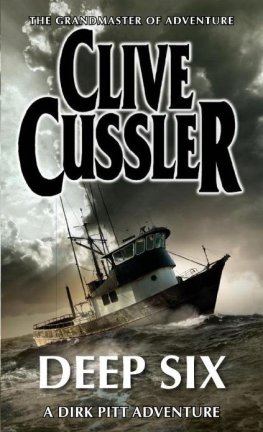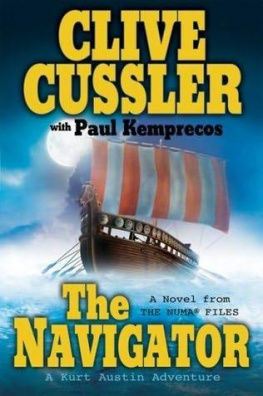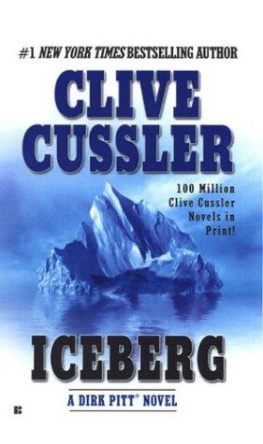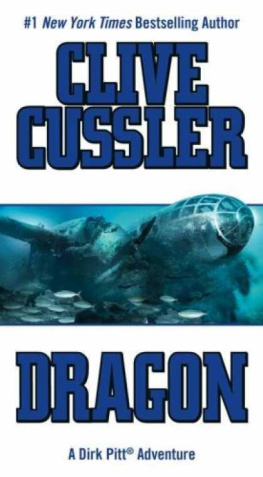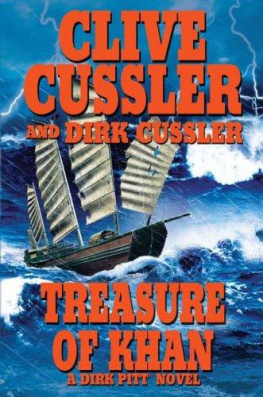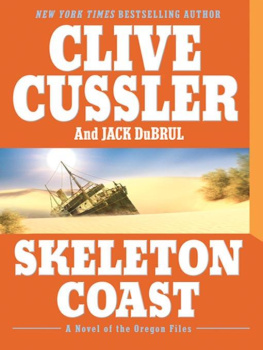Clive Cussler
Atlantis Found
7120 B.C.What is now Hudson Bay, Canada
The intruder came from beyond. A nebulous celestial body as old as the universe itself, it had been born in a vast cloud of ice, rocks, dust, and gas when the outer planets of the solar system were formed 4.6 billion years ago. Soon after its scattered particles had frozen into a solid mass one mile in diameter, it began streaking silently through the emptiness of space on an orbital voyage that carried it around a distant sun and halfway to the nearest stars again, a journey lasting many thousands of years from start to finish.
The comet's core, or nucleus, was a conglomeration of frozen water, carbon monoxide, methane gas, and jagged blocks of metallic rocks. It might accurately be described as a dirty snowball hurled through space by the hand of God. But as it whirled past the sun and swung around on its return path beyond the outer reaches of the solar system, the solar radiation reacted with its nucleus and a metamorphosis took place. The ugly duckling soon became a thing of beauty.
As it began to absorb the sun's heat and ultraviolet light, a long comma formed that slowly grew into an enormous luminous blue tail that curved and stretched out behind the nucleus for a distance of 90 million miles. A shorter, white dust tail more than one million miles wide also materialized and curled out on the sides of the larger tail like the fins of a fish.
Each time the comet passed the sun, it lost more of its ice and its nucleus diminished. Eventually, in another 200 million years, it would lose all its ice and break up into a cloud of dust and become a series of small meteorites. This comet, however, would never orbit outside the solar system or pass around the sun again. It would not be allowed a slow, cold death far out in the blackness of space. Within a few short minutes, its life would be snuffed out. But on this, its latest orbit, the comet passed within 900,000 miles of Jupiter, whose great gravitational force veered it off on a collision course with the third planet from the sun, a planet its inhabitants called Earth.
Plunging into Earth's atmosphere at 130,000 miles an hour on a forty-five-degree angle, its speed ever-increasing with the gravitational pull, the comet created a brilliant luminescent bow shock as its ten-mile-wide, four-billion-ton mass began to break into fragments due to friction from its great speed. Seven seconds later, the misshapen comet, having become a blinding fireball, smashed onto Earth's surface with horrendous effect. The immediate result from the explosive release of kinetic energy upon impact was to gouge out a massive cavity twice the size of the island of Hawaii as it vaporized and displaced a gigantic volume of water and soil.
The entire earth staggered from the seismic shock of a 12.0 earthquake. Millions of tons of water, sediment, and debris burst upward, thrown through the hole in the atmosphere above the impact site and into the stratosphere, along with a great spray of pulverized, fiery rock that was ejected into suborbital trajectories before raining back to earth as blazing meteorites. Firestorms destroyed forests throughout the world. Volcanoes that had been dormant for thousands of years suddenly erupted, sending oceans of molten lava spreading over millions of square miles, blanketing the ground a thousand or more feet deep. So much smoke and debris were hurled into the atmosphere and later blown into every corner of the land by terrible winds that they blocked out the sun for nearly a year, sending temperatures plunging below freezing, and shrouding Earth in darkness. Climatic change in every corner of the world came with incredible suddenness. Temperatures at vast ice fields and northern glaciers rose until they reached between ninety and a hundred degrees Fahrenheit, causing a rapid meltdown. Animals accustomed to tropical and temperate zones became extinct overnight. Many, such as the woolly mammoths, turned to ice where they stood in the warmth of summer, grasses and flowers still undigested in their stomachs. Trees, along with their leaves and fruit, were quick-frozen. For days, fish that were hurled upward from the impact fell from the blackened skies.
Waves five to ten miles in height were thrown against the continents, surging over shorelines with a destructive power that was awesome in magnitude. Water swept over low coastal plains and swept hundreds of miles inland, destroying everything in its path. Endless quantities of debris and sediment from the ocean floors were spread over low landmasses. Only when the great surge smashed against the base of mountains did it curl under and begin a slow retreat, but not before changing the course of rivers, filling land basins with seas where none existed before and turning large lakes into deserts.
The chain reaction seemed endless.
With a low rumble that grew to the roar of continuous thunder, the mountains began to sway like palm trees under a light breeze as avalanches swept down their sides. Deserts and grassy plains undulated as the onslaught from the oceans reared up and struck inland again. The shock from the comet's impact had caused a sudden and massive displacement in Earth's thin crust. The outer shell, less than forty miles thick, and the mantle that lay over the hot fluid core buckled and twisted, shifting crustal layers like the skin of a grapefruit that had been surgically removed and then neatly replaced so it could move around the core of fruit inside. As if controlled by an unseen hand, the entire crust then moved as a unit.
Entire continents were shoved around to new locations. Hills were thrust up to become mountains. Islands throughout the Pacific Ocean vanished, while others emerged for the first time. Antarctica, previously west of Chile, slid over two thousand miles to the south, where it was quickly buried under growing sheets of ice. The vast ice pack that once floated in the Indian Ocean west of Australia now found itself in a temperate zone and rapidly began to melt. The same occurred with the former North Pole, which had spread throughout northern Canada. The new pole soon began to produce a thick ice mass in the middle of what once had been open ocean.
The destruction was relentless. The convulsions and holocaust went on as if they would never stop. The movement of the Earth's thin outer shell piled cataclysm upon cataclysm. The abrupt melting of the former ice packs, combined with glaciers covering the continents that had suddenly shifted into or near tropical zones, caused the seas to rise four hundred feet, drowning the already destroyed land that had been overwhelmed by tidal waves from the comet's impact. In the time span of a single day, Britain, connected to the rest of the European continent by a dry plain, was now an island, while a desert that became known as the Persian Gulf was abruptly inundated. The Nile River, having flowed into a vast fertile valley and then on toward the great ocean to the west, now ended at what had suddenly become the Mediterranean Sea.
The last great ice age had ended in the geological blink of an eye.
The dramatic change in the oceans and their circulation around the world also caused the poles to shift, drastically disturbing the earth's rotational balance. Earth's axis was temporarily thrown off by two degrees, as the North and South Poles were displaced to new geographical locations, altering the centrifugal acceleration around the outer surface of the sphere. Because they were fluid, the seas adapted before the earth made another three revolutions. But the landmass could not react as quickly. Earthquakes went on for months.
Savage storms with brutal winds swirled around the earth, shredding and disintegrating everything that stood on the ground for the next eighteen years before the poles stopped wobbling and settled into their new rotational axis. In time, sea levels stabilized, permitting new shorelines to form as bizarre climatic conditions continued to moderate. Changes became permanent. The time sequence between night and day changed as the number of days in a year decreased by two. The earth's magnetic field was also affected and moved northwest over a hundred miles.

